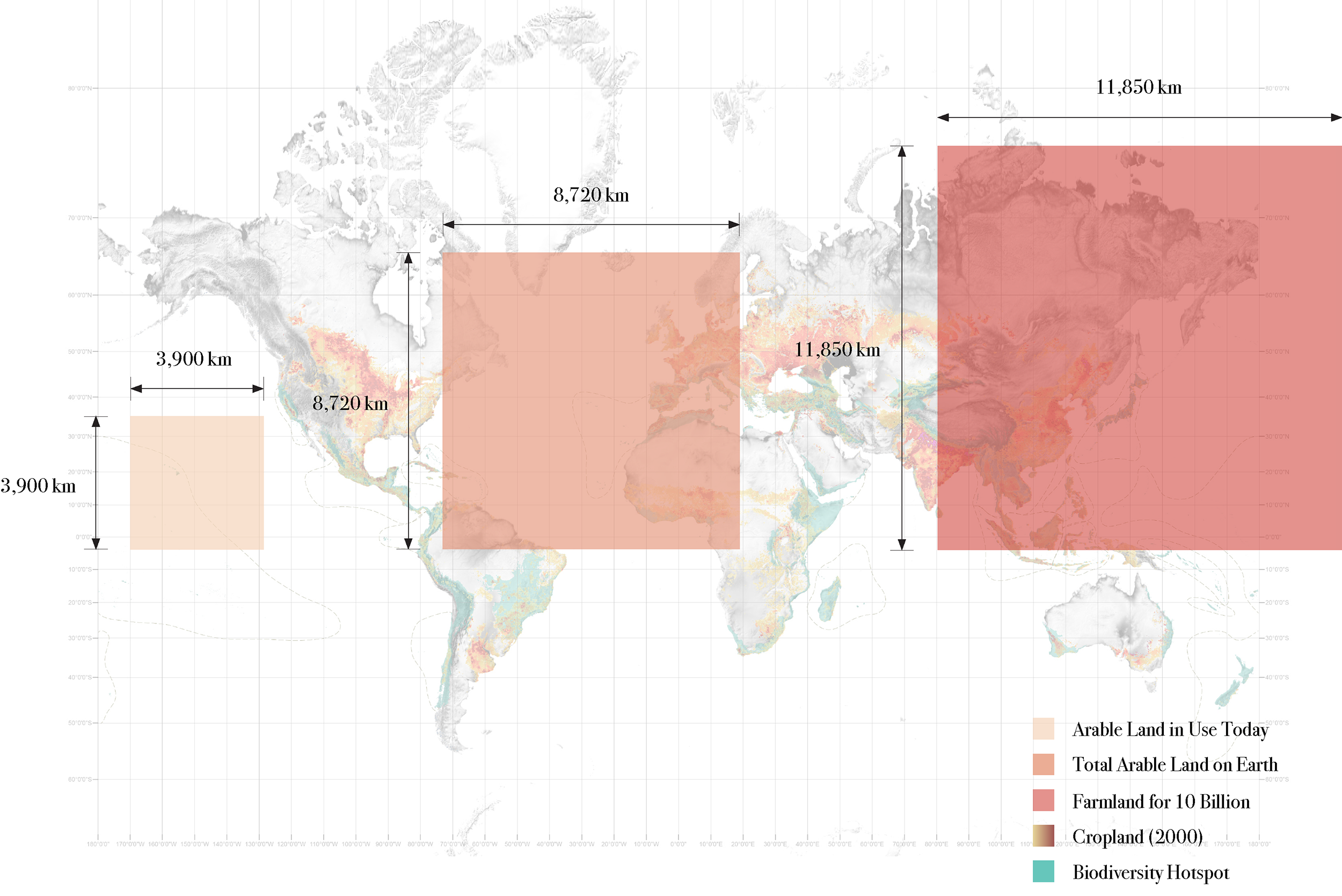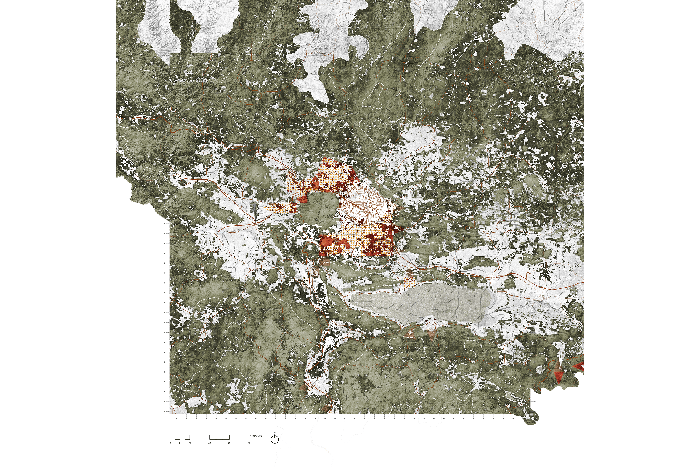
Précis
On May 20, 1570, Abraham Ortelius, book collector and engraver from Antwerp, published the Theatrum Orbis Terrarum (Epitome of the Theater of the World), the world's first atlas…
Read more
Essay: Atlas for the End?
Whereas Ortelius marked out modernity's territorial beginnings, this atlas — by focusing on the remaining habitat in the world's 36 biodiversity hotspots — rakes over its remains. This section explains the philosophy and methodology of the atlas…
Read more
World Maps
This section offers 44 thematic world maps related to the general issue of global biodiversity and the epoch of the anthropocene more broadly. Each map is accompanied by a short explanatory text and references for the data sources…
Read more
Datascapes
The Datascapes are 11 visualizations designed to make quantities such as carbon emissions, urban growth and food production which are otherwise hard to comprehend, intelligible…
Read more
Hotspots
The maps in this section audit the amount of protected areas in the world's 36 hotspots and their 391 ecoregions as well as analyze how 422 cities in the hotspots are growing…
Read more
Hotspot Cities
In this section we zoom in on a sample set of 33 the biggest and fastest growing of all the cities situated in the world's 36 recognized biological hotspots…
Read more
Facts & Data
Here you will find a summary of the key statistical findings of this research and two performance indices for the world's hotspots and their host nations…
Read more
Essay: Atlas for the Beginning
In these concluding remarks we point optimistically towards a world where landscapes are being restored on a planetary scale and set out our research agenda for the future…
Read more
Guide to the Flora & Fauna of the World
This section of the Atlas showcases the photography of Singaporean artist Zhao Renhui, Director of the Institute for Critical Zoologists…
Read more
About the Atlas (FAQ)
The frequently asked questions in this section provide additional information about the Atlas…
Read more